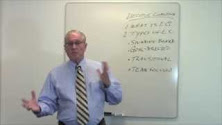 The Four Domains of Teams (think of the word SIRE)
The Four Domains of Teams (think of the word SIRE)1. Strategic Thinking: People with strengths in this domain tend to force the group to look at the big picture and toward the future—what might be. Always reviewing the data and applying what they learn, strategic thinkers move the organization forward—stretching its members to think beyond what is, to the possibilities of the future. People who are strong in this strategic thinking domain possess strengths in such areas as: Context, Futuristic, Ideation, Input, Analytic, Intellection, Learner and Strategic.
2. Influence: People with strengths in this key domain know how to sell or promulgate the team’s ideas both inside and outside the organization. These people are natural persuaders, inspire others to adopt their ideas, and are vital to moving teams forward in communities. Again, not everyone influences the same way. But people with the following domain-area strengths tend to be key influencers: Activator, Command, Communication, Competition, Maximizer, Self Assurance, Significance, and Woo.
3. Relationship Building: Those with strengths in this domain tend to keep groups together. They’re the social glue, the mortar between the foundation building blocks. They know how to create and maintain groups such that the whole is much greater than its parts. Such relationship builders have domain strengths as follows: Adaptability, Developer, Connectedness, Empathy, Includer, Individualization, Positivity, and Relator.
4. Execution: People with strengths in this key domain know how to rally around a goal and get things done. Differing strengths might dictate the style of getting to the goal, but folks who have strengths in this domain area contribute mightily to execution. Here are those strengths: Achiever, Arranger, Belief, Consistency, Deliberative, Discipline, Focus, Responsibility, and Restorative. Take the StrengthsFinder to find yours and read the book for explanations of all of the strengths.






















